Cutting up rawhide
We are no longer building saddle trees, but we have two videos about how Western saddles fit horses available on our westernsaddlefit.com website.
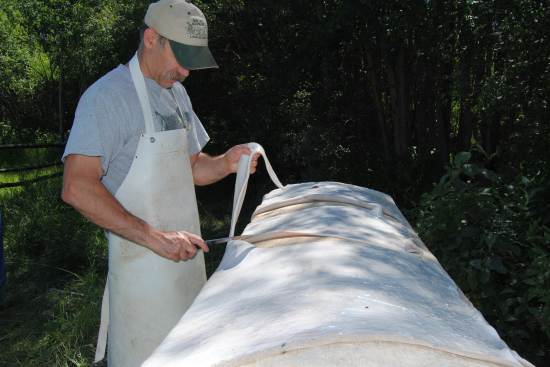
It is a beautiful, sunny, summer day, so what better to be doing than... cutting up rawhide??? I've done previous posts on making rawhide, and rawiding trees. This is a job that has to be done between those steps, and at least it is nice weather to be doing it in! These are hides Rod made into rawhide earlier this week. They have been well rinsed, and it is time for the final step in the "getting rawhide ready to use" process.
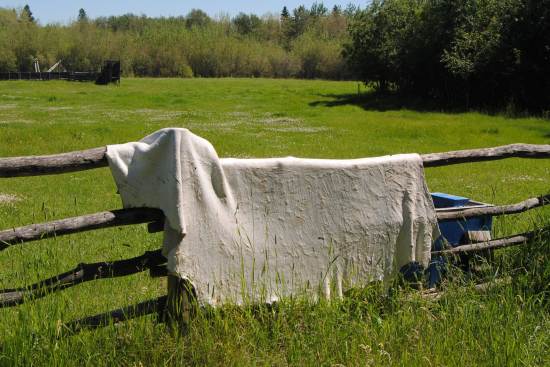
Since the hides have been soaking in barrels of water, they are totally soaked through and dripping wet. To help them get a little drier prior to working with them, they get hung up on our handy-dandy patented hide hanging apparatus, also known as the pasture fence. The horses don't seem to mind...
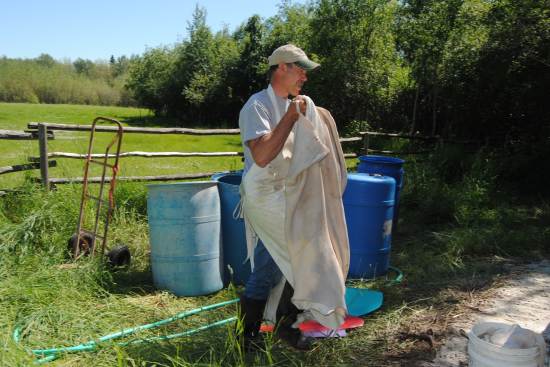
Even though they are cut in half and have all the hair and flesh removed, they still aren't light to carry, especially when you don't want to let them drag on the ground and get dirty. And these were BIG bulls.
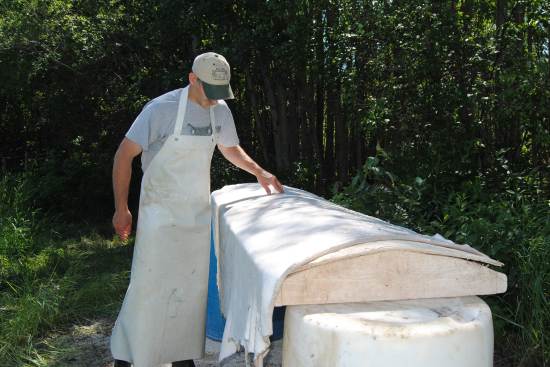
With the hide flesh side up on the fleshing pole, Rod checks it over well for nicks and cuts and any other defects he wants to avoid having in his finished trees. Depending how well the skinners did their job, it can be very easy or very difficult to get the parts needed from a side. This one was well done and he got three top covers from it. One of the other sides he only managed to get one...
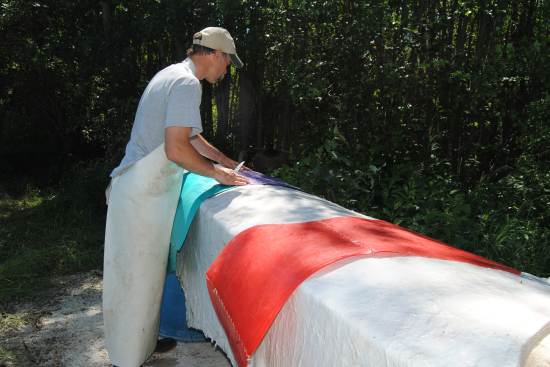
He has patterns for the sizes he needs for fork covers for slick forks and swell forks. He spaces them out on the hide
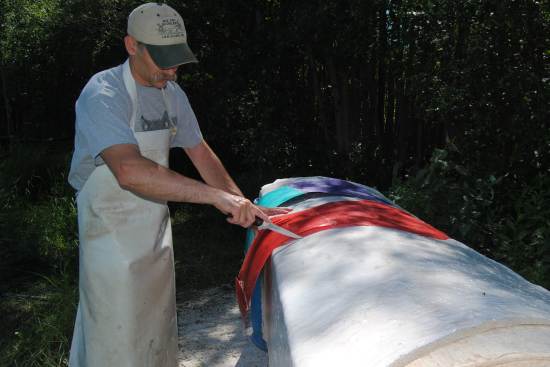
and marks the outline with his knife.
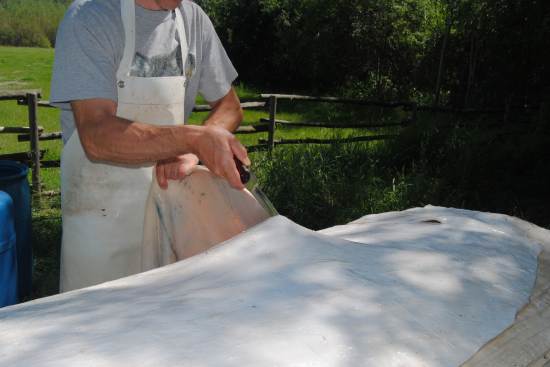
Then he cuts out the top covers along his markings. These patterns are all a bit oversize, so precise cutting isn't needed. That comes later, when he is sewing the rawhide on to the tree.
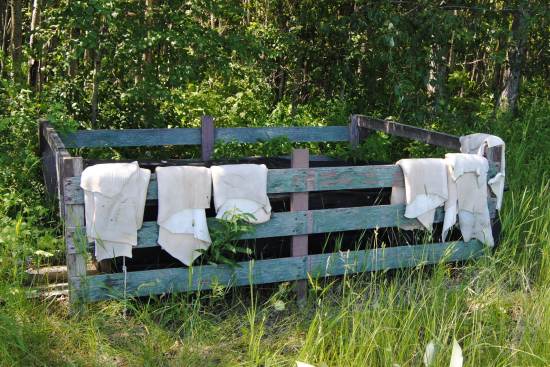
The pieces are folded and hung up on our second handy-dandy patented hide hanging apparatus. Here he set the pieces he needs for individual trees together, slick forks on one end and swell forks on the other to keep things straight. A full tree takes a top cover, two bar pieces and a gullet piece.
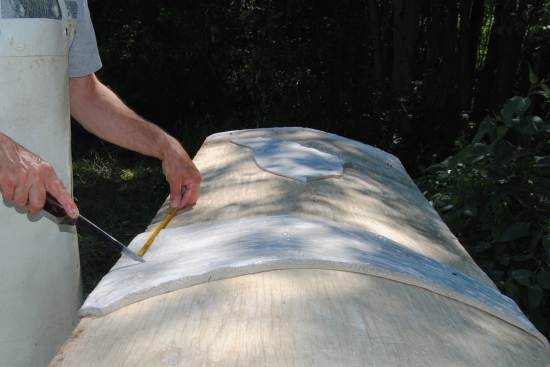
Bar pieces don't need patterns to figure them out, just a length and width measurement. Same deal here - mark the hide with the knife and then cut along the marks to get the right sized piece for a bar.
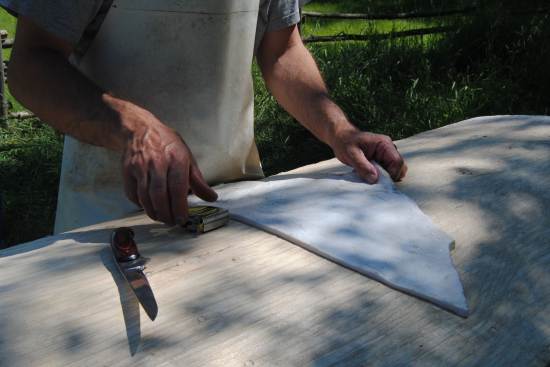
Gullet pieces are easier, as they are smaller. This would have been a good piece for a gullet
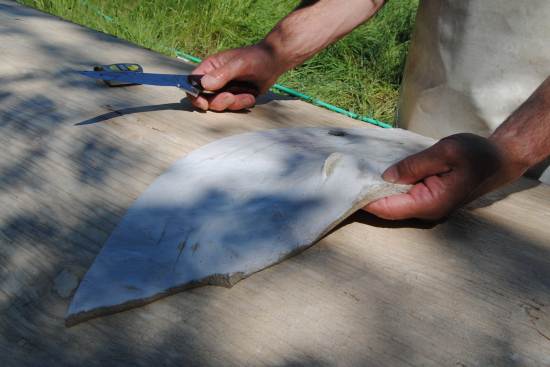
but they sliced it while skinning, and what was left was too small so...
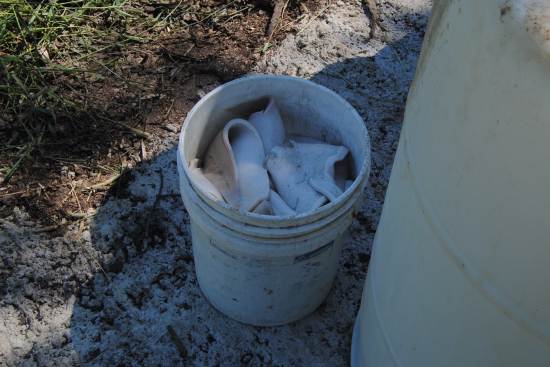
it hit the handy-dandy patented "goop bucket" along with all the other extra pieces of hide that can't be used. These hides were well skinned, so we didn't have extra pieces of trees left over. Often, if a hide has lots of nicks and cuts, Rod can't get top covers out of places he should be able to, so those sections get cut up into bars and gullets, put into individual bags and labelled the same way we do our full trees. That way when he gets extra top covers (like today) he can match them with corresponding thickness of bars and gullets from the extras we have in the freezer.
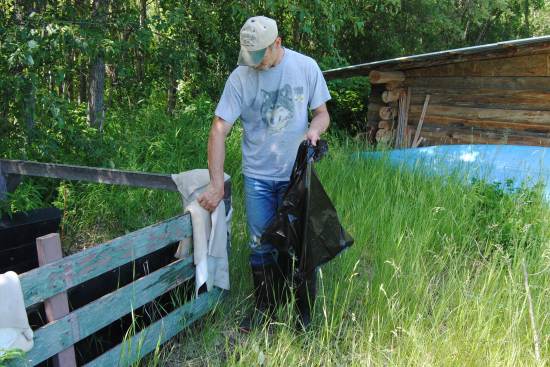
Then the pieces for a single tree are put into one bag
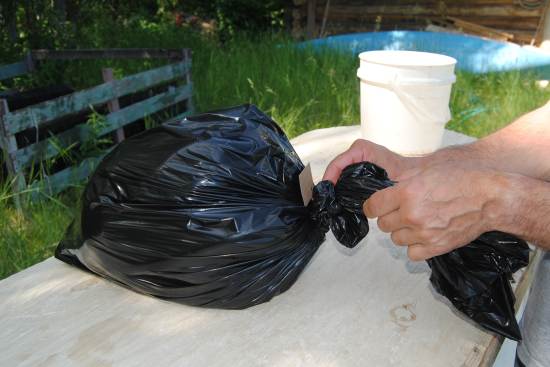
and tied and labelled.
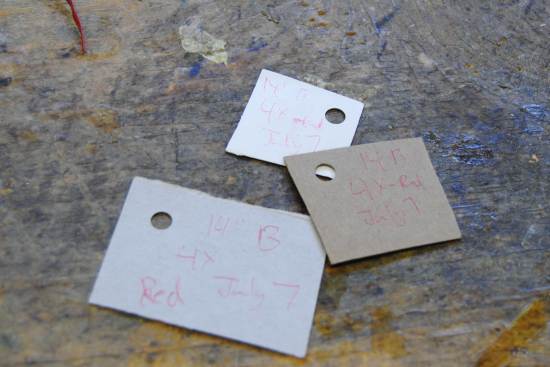
We label the bags according to the type of tree they are for (Wade or 14" for slick or swell forks) whether they are bulls (B) or cows, the date they get frozen, the color of the hide and our handy-dandy patented hide classification system for thickness (1 to 5 X). This makes life a lot easier when you are pulling hides out of the freezer and you need a lighter weight hide or a heavier hide for an "equipment tester" type of customer. Dating them helps too, because we try to rotate them through the freezer and not leave any in there too long.
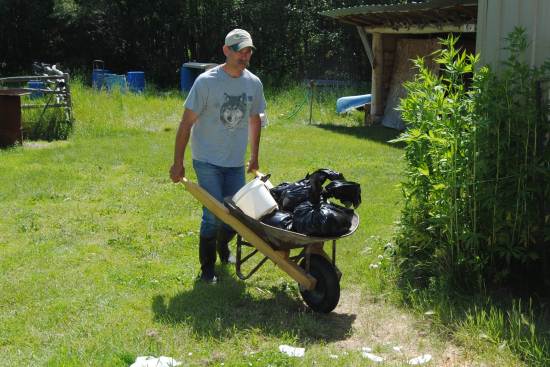
Then they get taken to the shop in our handy-dandy patented hide transporting device
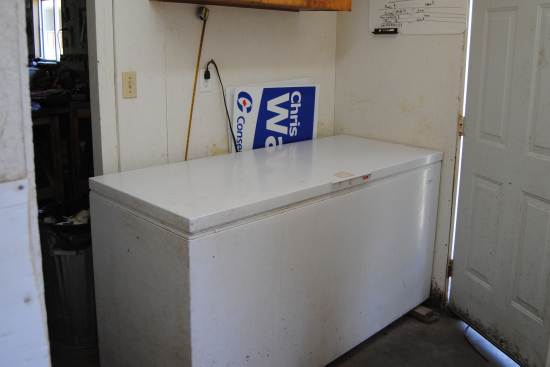
and normally would go right into the handy-dandy patented hide storage facility, but...
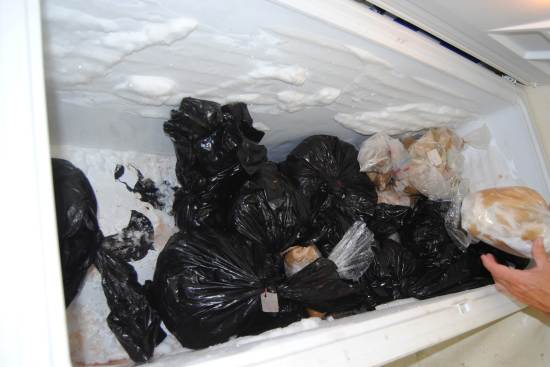
it was getting low on contents, and was pretty desperate for a defrosting, so we pulled everything out
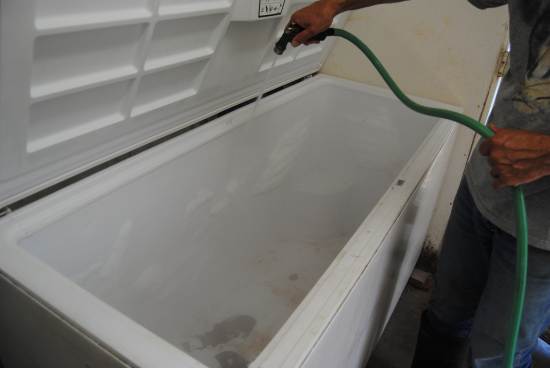
and hosed it down with hot water to defrost and clean it. Since the freezer lives in the rawhide room, getting water all over the floor is a regular occurrence, and whoever came up with those little drain holes in the bottom was a genius... I just wish I could do the freezers in the house this easily.
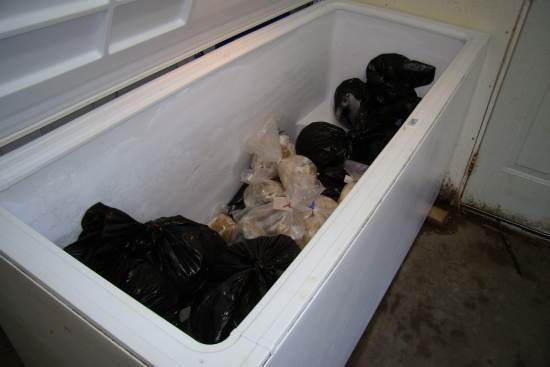
Once it was cleaned and dried, everything old and new was put back in the freezer. And we even remembered to plug it back in!!! Now, he just has to make rawhide next week from the seven (yeah, 7) hides I picked up yesterday...
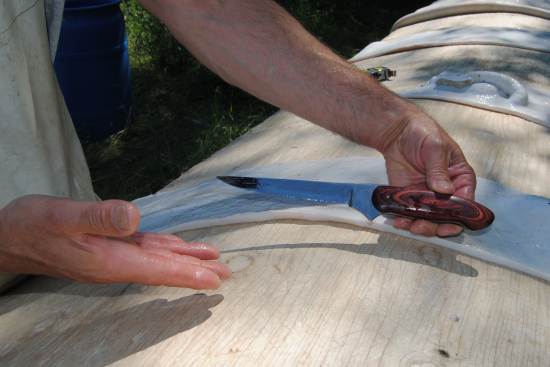
Oops, almost forgot. Rod wanted to show off his handy-dandy, patented hide cutting knife. This knife is hand made by one of our customers, John Miller of Dawson Creek, BC. Rod got a couple knives from him for different tasks, and he loves them. It takes less sharpening than any other knife he has had before, and it "cuts like butter", he says. Looks good too!
